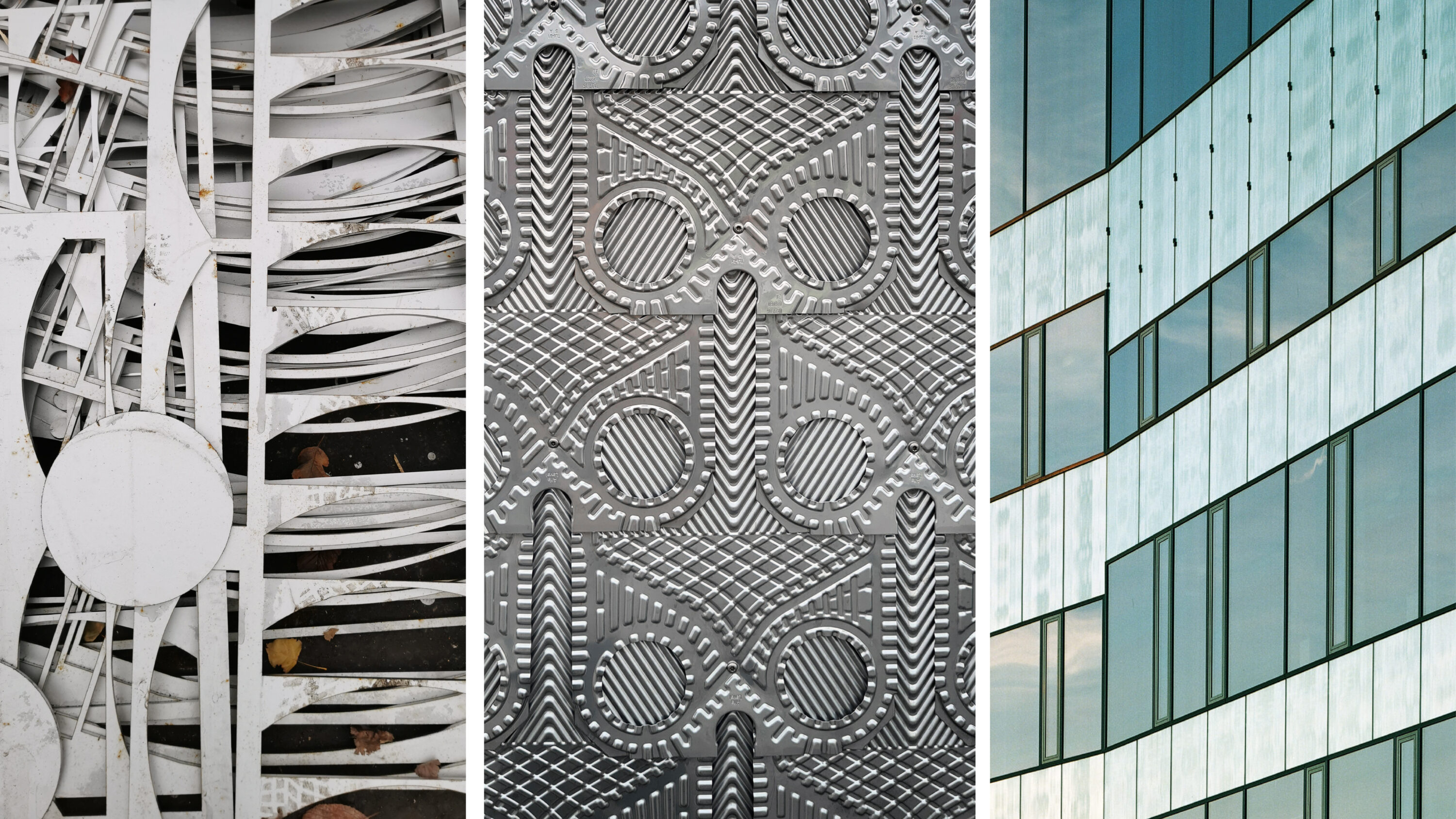2022-11-16
How is a facade made from discarded material?
A mobility house is being built in Malmö with a facade of discarded glass, leftover heat exchanger plates and skeletons. But what it will look like is unclear even at the groundbreaking. "Working with waste puts both the role of the architect and the building permit process in a new light," says Petra Jenning, architect and innovation manager at FOJAB.
The facade of the Hyllieäng mobility building that FOJAB is designing for Parkering Malmö consists of materials that would otherwise have been discarded. Glass removed from the facade of the Orkanen university building will be used, as well as plates from heat exchangers and steel skeletons from the manufacturing industry, i.e. the leftovers from punching shapes out of sheet metal.
The choice of these materials was the result of both coincidence and diligent searching. Looking for possible - existing - facade materials for an area of about 2,400 square meters was a new experience.
- 'Building entirely on what already exists is a completely new way of working,' says Petra Jenning. 'We contacted demolition projects in the region and various actors who handle waste and residual products from different industries. Stena Recycling was very helpful; they investigated which materials they receive in large quantities and which could be of interest to us. We went through their depot and literally stood and rummaged in their containers.
New requirements for the architect
The challenges of designing with waste are first and foremost about knowing which materials are available in the quantities needed, at the time needed. You have to be able to see the potential, understand the characteristics and qualities of the material.
- "We architects have to work with a greater degree of uncertainty," says Petra. "Normally, we choose materials that are ordered and manufactured according to our specifications. Here we are at the mercy of what is available. This places completely new demands on us in the design process.
It is also about understanding the opportunities and constraints at the production stage.
- In this project, we work with materials from industries other than construction, which creates new relationships and ways of working. What the companies previously saw as waste, we take care of as a resource. Success requires close cooperation, a lot of dialog and flexibility from everyone involved.
Final outcome unclear
And exactly what the end result will be, what the facade will look like, is not even known when construction starts.
- The glass from the Hurricane may break when we put it up. We only have a certain amount of tiles and cannot order more. The uncertainty regarding the cutting skeleton is about its appearance. Orders are relatively small and production is fast, so it is difficult to say in advance what the game will look like.
Challenging the building permit process
Despite the uncertainties, the project has received a building permit. For it to be granted, the availability of recycled materials must be managed by the developer, i.e. secured for the completion of the project.
- The city planning office has evaluated a mock-up presented by the applicant, regarding glass and other recycled façade materials. It gives an idea of the character of the building, even if some minor details such as the pattern of the cutting plate are not entirely clear, says Stefana Nyberg, building permit officer at the City of Malmö.
However, Petra Jenning believes that a more flexible building permit process and a more frequent dialog would be better for this kind of work process. This in turn would benefit the circular economy.
- Instead of a single decision - yes or no - quite late in the process, it might be better to have an early, more general policy decision followed by ongoing decisions on the details.
Legislation not adapted
Stefana Nyberg of the City of Malmö also believes that the current building permit process has its limitations.
- The legislation has not taken into account the problems that arise when using recycled materials. We are required by the government to make a decision within ten weeks, with the possibility of a further ten-week extension. Ten weeks are counted from the time the case is complete," she says:
- But the legislation can be changed and adapted, especially as there is a national ambition to work more on reuse and circular economy.
Some way to go
And even if laws and regulations change, there is still a long way to go to make construction fully circular, says Petra Jenning:
- Better information on available materials is needed. In the construction industry, a kind of equivalent of the Accessible Materials Block is being developed, but to achieve the climate commitments we need to use materials from other industries as well. This is of course much more difficult - although it also opens up more opportunities.
